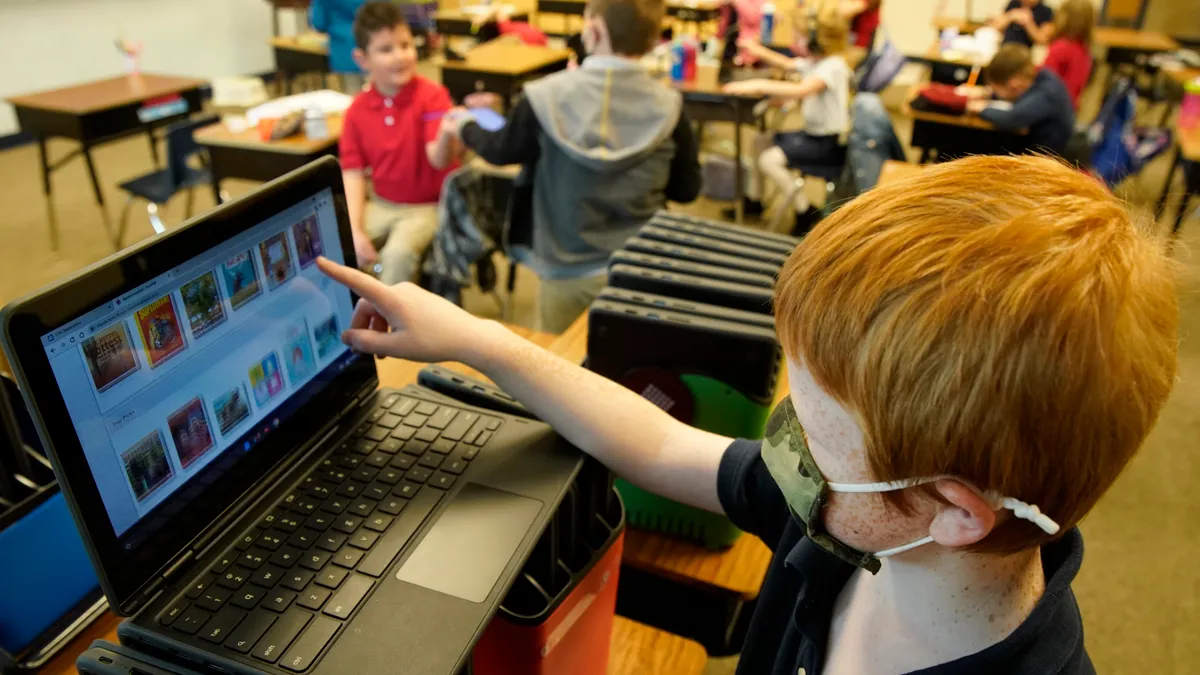Dive Brief:
-
A strong majority of schools and libraries — 86% — agree or strongly agree that insufficient home internet is a significant problem in their community, according to the 11th annual E-rate survey from Funds For Learning, a consulting firm that supports schools and libraries in navigating the federal funding process.
-
The survey further found the E-rate program is vital for schools and libraries, as 97% of respondents said they have more students and patrons connected to the internet because of the program.
-
While the program overseen by the Federal Communications Commission has worked to help subsidize school internet connections and telecommunications infrastructure, most of the 2,164 survey respondents want to see cybersecurity included in the program, as well as expanded E-rate support for internet connections off school and library campuses.
Dive Insight:
The Funds For Learning survey findings identify the need for closing the homework gap experienced by students who have insufficient home internet access, making it difficult for them to complete digital homework assignments.
The homework gap posed a challenge before the COVID-19 pandemic, but the switch to online learning for significant periods during the past two years due to school closures called further attention to the problem.
The 25-year-old E-rate program had a $4.276 billion funding cap for fiscal year 2021 to provide discounts on telecommunications and internet access to schools depending on their poverty level. The FCC service is also provided to eligible libraries.
With nearly 50,000 students, the El Paso Independent School District in Texas has seen a need to address the homework gap — particularly during the pandemic— through increased internet access for homes in its community, said Lilibeth Flores, an information technology program coordinator who works with E-rate funding for the district. But strong internet access in school buildings is needed just as much for student success, Flores said.
“As important as it was [to have internet] at home, it’s even more so at school within a site to have access, to have consistency, sustainability, to be able to rely on these services for learning,” Flores said. “The needs have to be reevaluated.”
Although continued federal investment is likely to ensure connectivity for students both at home and school, that may not necessarily be through the E-rate program, said Noelle Ellerson Ng, associate executive director of advocacy and governance for AASA, The School Superintendents Association.
“I think there’s an inroad to look at how we can have E-rate leveraged, whether it is an expansion of E-rate or continued federal funding,” Ellerson Ng said.
Although 97% of survey respondents said they wish to see support for cybersecurity in the E-rate program, Ellerson Ng thinks that expansion is less probable.
“While there is a role for the federal government in helping to address cybersecurity, the involvement of education should be part of a broader cybersecurity package,” Ellerson Ng said.
But there is a “full-on consensus” by respondents that internet access at schools is pointless without cybersecurity, said Funds For Learning CEO John Harrington. Since 2016, about 1,180 cyber-related disruptions have occurred in public schools, and a report from K-12 Cybersecurity Resource Center this year acknowledged 2020 as a “record-breaking” period for cyber attacks against U.S. schools.
“Without cybersecurity, without reliable internet, the foundation of what we’re trying to achieve here gets really shaky,” Harrington said.
COVID-19 has further shifted the E-rate program by causing a skyrocketing in the number of school-issued devices in students’ hands, he said.
“COVID compressed the timelines, so it did not change, really, the course of education technology,” Harrington said. “We’ve been on this slow and steady march towards 1:1 initiatives, online digital learning platforms, all of that stuff, for years. What COVID did is it took probably the next 5 to 7 years and compressed them down to 5 to 7 months.”
Now that more students have devices, there will be a greater need for wireless internet access points on school campuses, Harrington said. This uptick in student devices has made E-rate more necessary than ever, because schools need the program’s support to make these reliable, needed internet connections possible.
In fact, the Funds For Learning survey found 88% of respondents will need to increase their broadband connections within the next three years.
Harrington agreed: “The more students are using the internet, these devices, the more there are media-rich opportunities to learn and engage. It just drives that bandwidth requirement.














